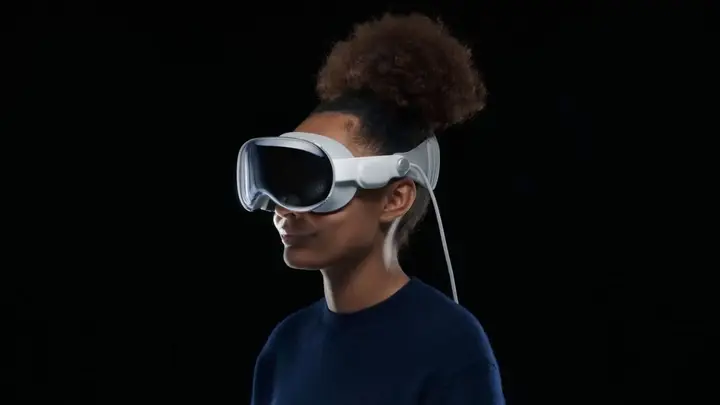On this fine Tuesday, Apple has unveiled its latest innovation: the Vision Pro headset. Resembling a pair of bulky ski goggles for the socially challenged, this spatial computing device promises a plethora of functionalities akin to a powerful computer. From web browsing to movie watching, email checking, and accessing various apps, the Vision Pro seems to offer a comprehensive digital experience. Surprisingly, despite its rather unappealing appearance, the device has already garnered significant attention, with over 200,000 preorders already in the books. However, with a hefty price tag of $3,500, it’s certainly a luxury item, albeit one that’s potentially out of reach for even the most extravagant spender.
Taking a closer look at the user experience, one finds themselves immersed in a virtual world, typing on an invisible keyboard and navigating through non-existent screens. It’s a surreal sight indeed, particularly when witnessing a user donning these goggles in the midst of the bustling New York City subway. The notion of survival seems precarious in such a scenario, prompting one to ponder whether wearing a sign signaling one’s vulnerability to organ harvesting might be more prudent. And while the Vision Pro may offer an unparalleled digital experience, its wearers risk the label of being unsuitable for romance, perhaps aligning with Apple’s covert mission to curtail human procreation in the name of planetary salvation.
Nevertheless, despite its potential marvels, the Vision Pro isn’t immune to criticism. Reports of simulator sickness among users, including nausea, dizziness, and headaches, have surfaced, prompting comparisons to more traditional forms of entertainment like watching Fox and Friends. Furthermore, the absence of virtual reality pornography has left some users disgruntled, though one might argue that such content isn’t exactly a necessity.
Beyond the physical discomfort and technological limitations, there’s a more profound concern at play: the erosion of genuine human connection. The Vision Pro, with its ability to transport users into a digital realm, risks isolating individuals from reality, fostering a culture of detachment and disengagement. In a world already inundated with distractions and virtual escapism, the Vision Pro threatens to further exacerbate our detachment from the tangible world, rendering us more alone than ever before.
Ultimately, while the Vision Pro may represent the pinnacle of technological innovation, its implications extend far beyond the realm of gadgetry. It’s a stark reminder of the delicate balance between technological advancement and human connection, urging us to reconsider the true value of our interactions with the world around us. After all, in a world inundated with digital distractions, perhaps the most revolutionary act is simply to be present.

